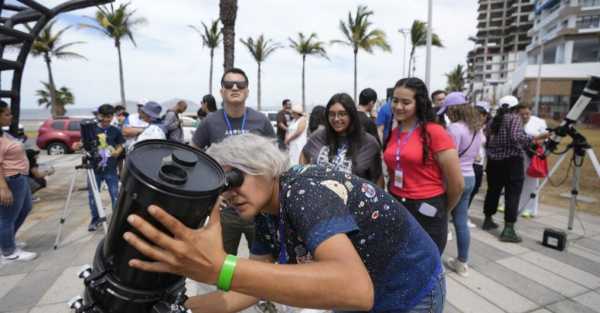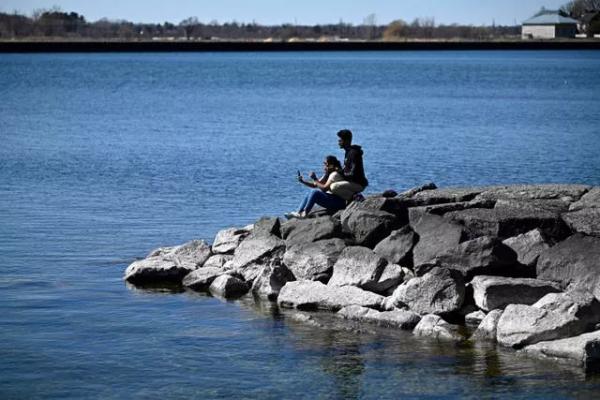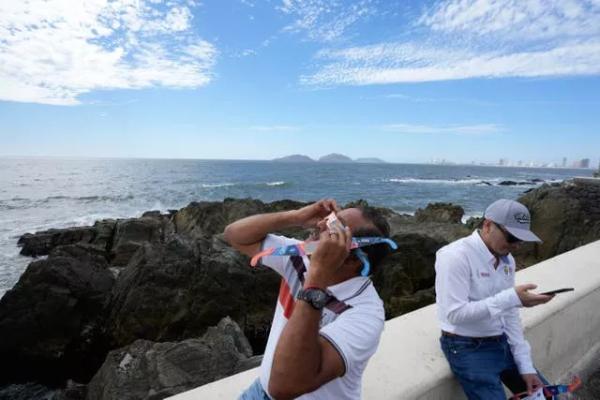
A total eclipse of the sun is set to plunge a stretch of North America into darkness on Monday, will millions of spectators across the US, Mexico and Canada hoping to catch a glimpse of the celestial phenomenon.
It promises to be North America’s biggest eclipse crowd ever, thanks to the lure of up to four minutes of midday darkness in Texas and other spots.
Almost everyone in North America is guaranteed at least a partial eclipse, weather permitting.

The best weather is expected at the tail end of the eclipse in Vermont and Maine, as well as New Brunswick and Newfoundland.
“Cloud cover is one of the trickier things to forecast,” National Weather Service meteorologist Alexa Maines explained at Cleveland’s Great Lakes Science Centre on Sunday. “At the very least, it won’t snow.”
Rain or shine, “it’s just about sharing the experience with other people,” said Chris Lomas from Gotham in the UK, who is staying at a sold-out trailer resort outside Dallas.
The full eclipse will see the moon due to slip right in front of the sun, entirely blocking it.
The resulting twilight, with only the sun’s outer atmosphere or corona visible, could be long enough for birds and other animals to fall silent, and for planets, stars and maybe even a comet to become visible.
The out-of-sync darkness could last up to 4 minutes, 28 seconds.

That is almost twice as long as it was during the US coast-to-coast eclipse seven years ago because the moon is closer to Earth.
It will be another 21 years before the US sees another total solar eclipse on this scale.
Monday’s eclipse begins in the Pacific and makes landfall at Mazatlan, Mexico, before moving into Texas, Oklahoma, Arkansas and 12 other US states in the Midwest, Middle Atlantic and New England, and then Canada.
The last stop will be Newfoundland, with the eclipse ending in the North Atlantic.
It will take just 1 hour, 40 minutes for the moon’s shadow to race more than 4,000 miles (6,500 kilometres) across the continent.
Eye protection is needed with proper eclipse glasses and filters to look at the sun, except when it ducks completely out of sight during an eclipse.

The path of totality — approximately 115 miles (185 kilometres) wide — encompasses several major cities this time, including Dallas, Indianapolis, Cleveland, Buffalo, New York and Montreal.
An estimated 44 million people live within the track, with a couple hundred million more within 200 miles (320 kilometres).
Experts from Nasa and scores of universities are posted along the route, poised to launch research rockets and weather balloons and conduct experiments.
The International Space Station’s seven astronauts will also be on the lookout, 270 miles (435 kilometres) up.
Sourse: breakingnews.ie